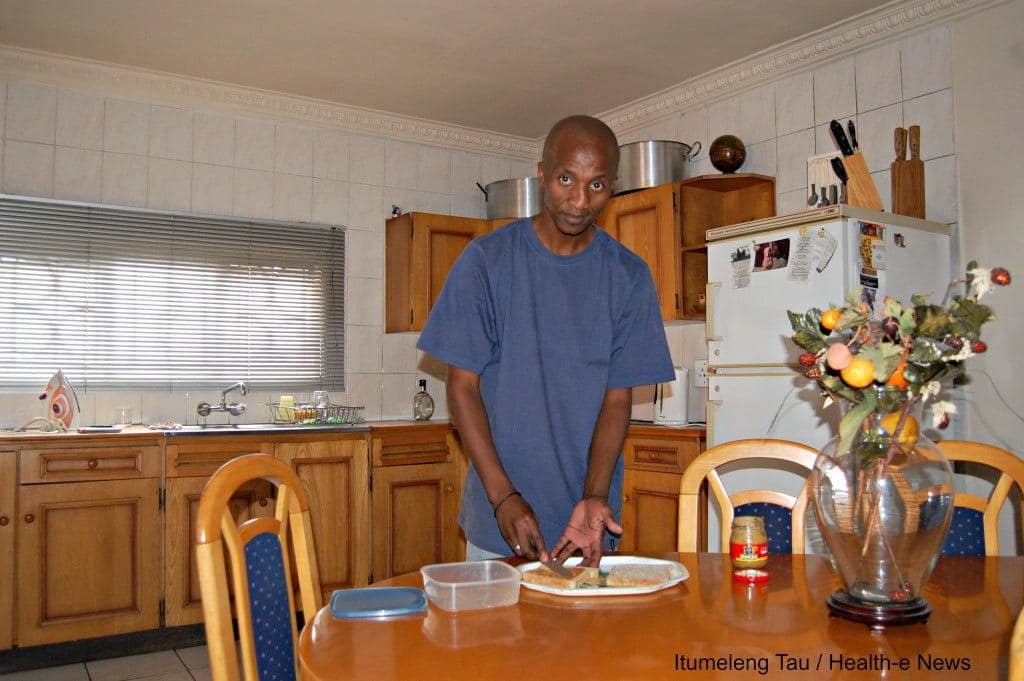What’s for lunch?

Almost 18 percent of South African children under the age of 15 years are either overweight or obese, according to the South African National Health and Nutrition Examination Survey.
According to the survey, about half of all children between the ages of 10 and 14 years do not take a packed lunch to school. The same proportion of children said they took lunch money to school, leaving their parents little or no chance to police what makes up their midday meal.
About 30 percent of children reported that they did not carry lunch boxes to school because there was nothing at home to put in them.
A new WHO report encourages schools worldwide to develop healthy standards for food distributed in schools or sold outside to curb obesity.
Meanwhile, we take a look at what’s for lunch for three South African families in Alexandra outside Johannesburg.
Nomonde Bush packs her children, 19-year-old Maliviwe and 5-year-old Hlelo, fat cakes or peanut butter sandwiches when she has money. When money runs short, Bush’s children make use of their school feeding schemes.
Thabang Ndlovu packs 10-year-old Tshiamo and Tshepang, 2, lunch because he believes it is healthier than giving children money to spend it on whatever they want at school. Polony or peanut butter sandwiches are typical school lunches in the Ndlovu household.
Fellow healthy dad Patrick Moloi said it’s usually peanut butter sandwiches for his children, Tumisang and Neo, as he tries to keep them away from unhealthy tuck shop food. – Health-e News.
An edited version of this story was also published on Health24.com
Author
Republish this article
This work is licensed under a Creative Commons Attribution-NoDerivatives 4.0 International License.
Unless otherwise noted, you can republish our articles for free under a Creative Commons license. Here’s what you need to know:
You have to credit Health-e News. In the byline, we prefer “Author Name, Publication.” At the top of the text of your story, include a line that reads: “This story was originally published by Health-e News.” You must link the word “Health-e News” to the original URL of the story.
You must include all of the links from our story, including our newsletter sign up link.
If you use canonical metadata, please use the Health-e News URL. For more information about canonical metadata, click here.
You can’t edit our material, except to reflect relative changes in time, location and editorial style. (For example, “yesterday” can be changed to “last week”)
You have no rights to sell, license, syndicate, or otherwise represent yourself as the authorized owner of our material to any third parties. This means that you cannot actively publish or submit our work for syndication to third party platforms or apps like Apple News or Google News. Health-e News understands that publishers cannot fully control when certain third parties automatically summarise or crawl content from publishers’ own sites.
You can’t republish our material wholesale, or automatically; you need to select stories to be republished individually.
If you share republished stories on social media, we’d appreciate being tagged in your posts. You can find us on Twitter @HealthENews, Instagram @healthenews, and Facebook Health-e News Service.
You can grab HTML code for our stories easily. Click on the Creative Commons logo on our stories. You’ll find it with the other share buttons.
If you have any other questions, contact info@health-e.org.za.
What’s for lunch?
by itumelengtau, Health-e News
February 4, 2016






